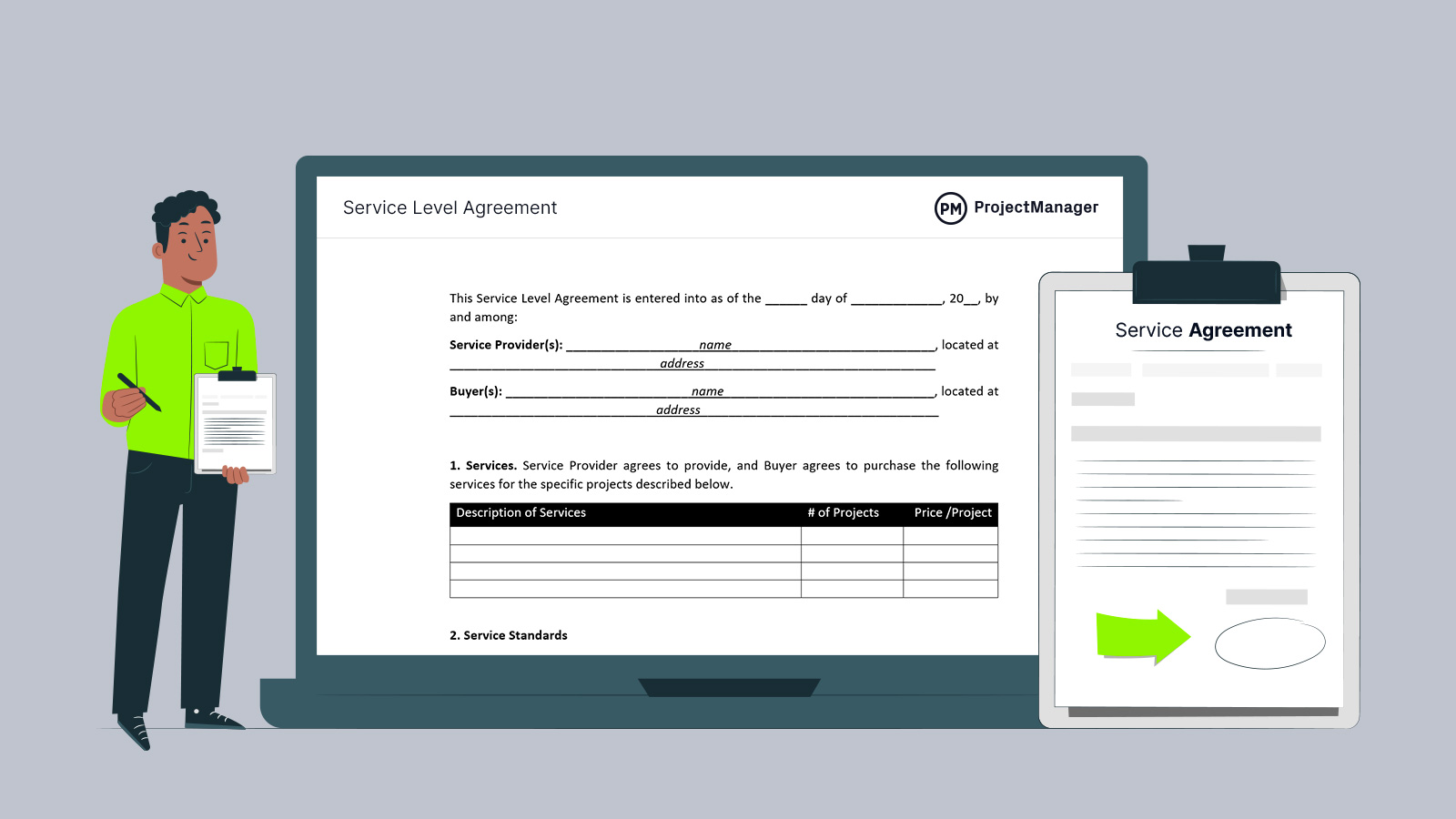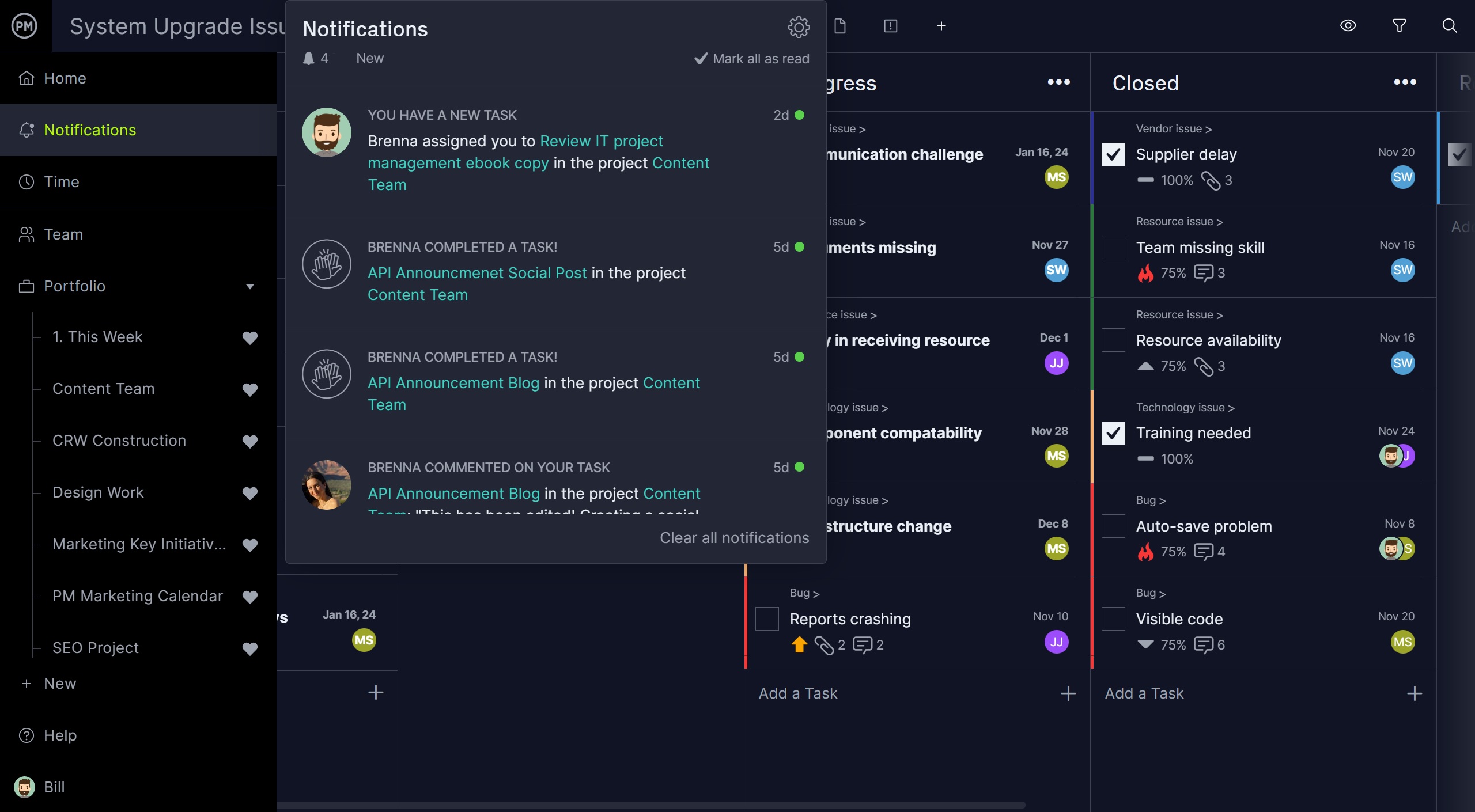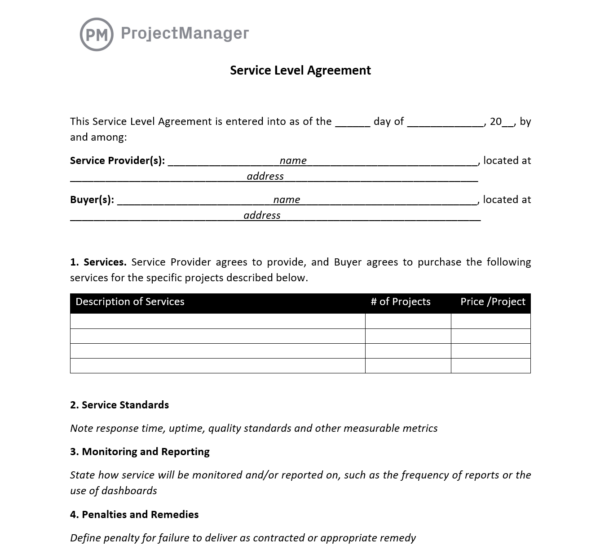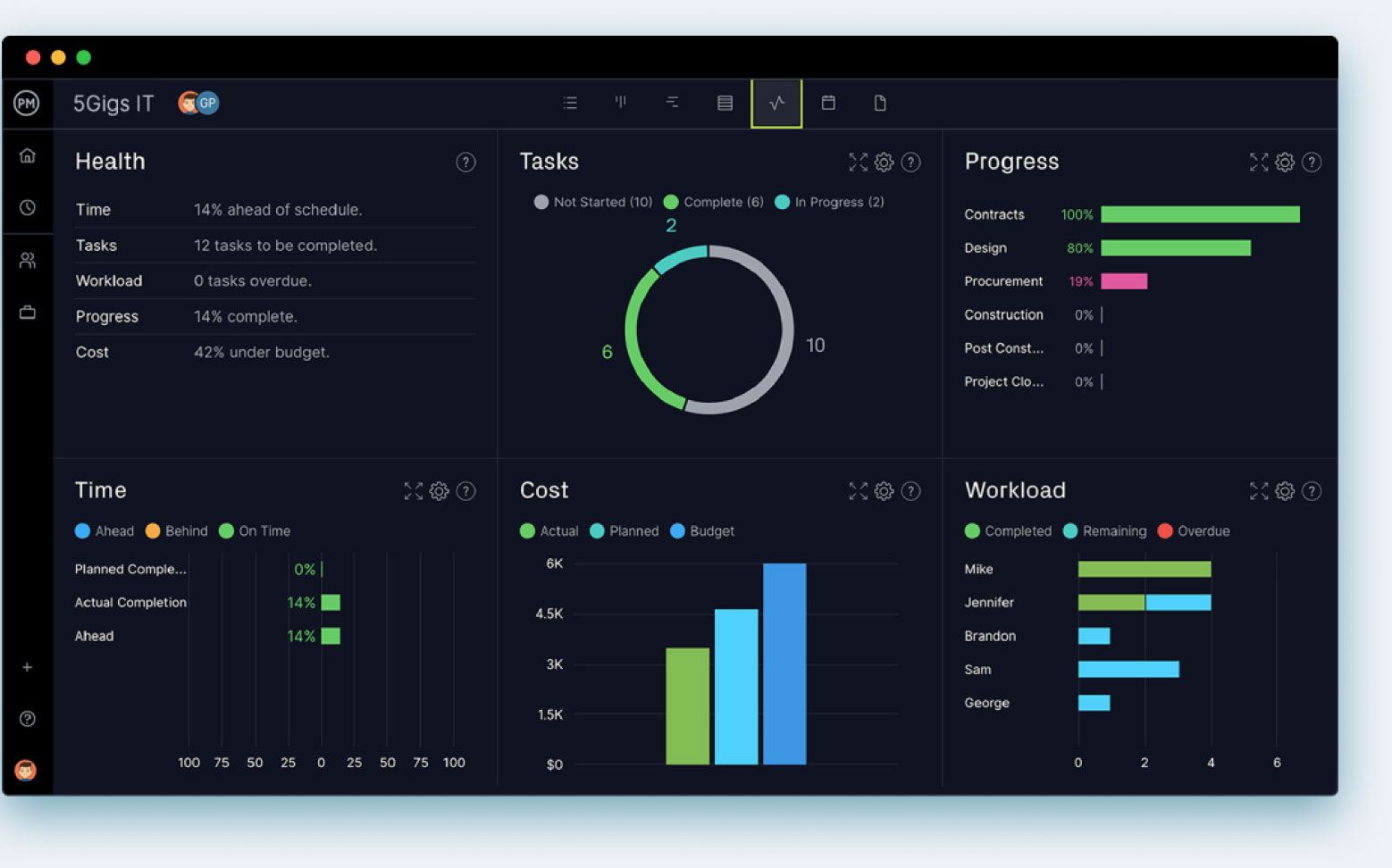A service level agreement, often abbreviated as SLA, is used in IT and professional services to define what a vendor is expected to do. It’s part of the contract between any technology vendor and sets up what will be levied upon them if the agreement isn’t upheld.
First, let’s explore the definition of an SLA in greater detail, including the different types of service agreements and why they’re so important. Then we’ll outline what goes into an SLA so you can make one, with an example to flesh it out and make it more comprehensible.
What Is a Service Level Agreement (SLA)?
As noted, a service level agreement is used to define the level of service that a customer expects from a supplier. This definition includes metrics that will be used to measure the service and the remedies or penalties that will be incurred if those service levels aren’t reached.

Get your free
Service Level Agreement Template
Use this free Service Level Agreement Template for Word to manage your projects better.
It’s common to find a standard service level agreement from most service providers, though there can be various types, which we’ll get to shortly. Whichever SLA is used, it should be reviewed and modified by the customer and legal counsel as they skew in favor of the supplier.
Project management software can help you keep track of SLAs. ProjectManager is award-winning project management software that has customizable kanban boards to collect and track your service level agreements and ensure that they’re being followed. Our unlimited file storage means that you can attach the SLA to a task card and include all pertinent information in the description of that card, including assigning it to a team member responsible for ensuring that the vendor is keeping to the terms of the agreement. Get started with ProjectManager today for free.

Types of Service Level Agreements
There are three different types of service level agreements: customer, internal and multi-level. That’s because one user’s needs aren’t always the same as another’s. Therefore, to better understand what an SLA is, we’ll define the three types below.
Customer SLA
As the name suggests, this SLA is used for an individual customer and covers all the relevant services that the customer needs. It’ll consist of only one contract, which will have details on the type and quality of the service that’s agreed on. For example, that service could include voice, text and internet services, but there’s still only one contract.
Internal SLA
An internal SLA is when both parties know the responsibilities and duties of the other team, which creates a better understanding between different departments. This helps to avoid ambiguity surrounding each team’s expectations, roles, deliverables and more. This means that departments in a company can have an internal service-level agreement, such as marketing providing a certain number of leads to sales per month.
Multi-Level SLA
The multi-level service level agreement is one that’s split into different tiers. Each of those tiers will address a subset of customers or departments in a company. They cover all relevant aspects of the agreement, including expectations for each party when there are multiple vendors or users. So a multi-level SLA could have a section for all customers and another for customers who have a specific subscription.
Why Is It Important to Write a Service Level Agreement?
The importance of a service level agreement is that it clearly defines the commitments between the service provider and the customer. These SLAs are very common in telecommunications, an industry that needs a guarantee of certain standards being upheld.
The supplier will also find the service level agreement important as it offers them a detailed framework of expectations. Therefore, they know what to do and can be protected if a client demands something unreasonable.
That’s because the service level agreement outlines obligations between the service supplier and the customers. It stipulates that a mutually agreed set of quality standards will be followed for the services provided. They also allow for contingencies and compensation when those service standards aren’t met.
What Should Be Included in a Service Level Agreement?
When you’re writing a service level agreement, there are various necessary components in order for it to cover all the bases and provide the client with what they need, while making sure the service provider is protected from going beyond what’s expected. The following is a list of those essential elements to consider when writing a service-level agreement.
Description of the Service
The type of service that’s being provided needs to be clearly specified, including the functions and any other pertinent information. This section will define the scope of service and the expected performance and quality of the work. This should be thorough so that all parties are clear on what’s being offered, how it’s delivered and what’s expected.
Payment Terms
This section is a contractually binding agreement between the service provider and client that ensures that the agreed-upon services are performed and paid for at the agreed price. This is a figure that’s been agreed upon by both parties and verifies the legal rights and obligations of the parties involved.
Service Levels
Here is where the SLA defines the desired performance level, reliability and responsiveness. That means the service shouldn’t exceed minimum disruption over time and is available when needed. The service will perform the actions it’s delivering promptly when customers request it.
Services That Won’t Be Included in the SLA
This can include SLA exclusions, which are one-time instances where the service level agreement isn’t in effect, such as server maintenance or upgrades. It will also outline services that don’t fall under the provider’s responsibility to further clarify for both parties what is and isn’t expected of the provider.
Service Level Agreement Metrics
It’s important that there is monitoring and reporting of the service level to ensure that it is being delivered as contracted. Here, supervision and monitoring are described, including the gathering of different types of statistics, the frequency those statistics are gathered and how the customer will be able to access them.
Conditions for SLA Cancellation
If the provider is unable to meet the requirements of the SLA, there will be consequences. Those consequences will be outlined in this section, such as the customer’s right to terminate the contract or seek a refund for losses incurred by the failure of service.
Indemnification Clauses
The indemnification clause is used to compensate a party for loss that’s caused by the other party’s actions or failure to perform. Unlike the above cancellation clause, this one is to protect against damages that result from defects in the service purchased.
Service Level Agreement Example
Let’s take a moment to look at how a service-level agreement would work in a real-life situation. Let’s look at a call center. They might have a service level agreement that defines the number of calls they answer in an hour. But a bakery could also have an SLA that defines the number of baked goods that they can deliver to a client each day.
The IT industry uses service-level agreements most for everything from cloud computing to network management and database management services. But you’ll also find SLAs in customer service, healthcare, logistics and education.
Service Level Agreement Template
This free service level agreement (SLA) template for Word has the basic elements any SLA should have including service standards, termination terms, payment terms and more. The best part is that it can be easily customized to add or remove any sections that might be needed.

More Service Level Agreement Templates
The following are some examples of service-level agreement templates from a variety of sources that you can use to get started when partnering with a service provider or customer. These outlines will make sure that you’ve not left anything out that is essential to legally protect both parties and ensure that the services are rendered as defined by the contract.
- Service Level Agreement Template by Slatemplate.com.
- Service Level Agreement Template by Columbia University
- Service Level Agreement Template by PandaDoc
- Service Level Agreement Template by RocketLawyer
- Service Level Agreement Template by Template.net
How ProjectManager Helps Service Providers
Once you have a service level agreement you’ll want to keep track of it to make sure that the services are being provided as determined by the contract. Project management software can help you monitor the SLA. ProjectManager is award-winning project management software that has unlimited file storage to keep multiple service-level agreements and have them easily accessible anywhere and at any time. Each can be tagged to make them easier to find and tracked over the course of their life cycle to ensure that services are rendered properly.
Use Reporting Tools to Track SLA Metrics
Once you’ve defined clear and measurable SLA metrics, you’ll need to create reporting and monitoring processes to track your SLA. Our customizable reporting features allow you to collect, analyze and report on SLA data, from costs to time and more, whether one service level agreement or many. We have status reports and portfolio reports, as well as other reports, all of which can be filtered to capture only the data you’re interested in. The reports can be shared in a variety of formats to keep your stakeholders informed.

Get a High-Level Overview With Live Dashboards
When you just want to get an overview of how your service level agreement is performing, toggle over to our real-time dashboard. It’ll automatically gather metrics and display them on easy-to-read graphs and charts. Users can view time, cost and other metrics to monitor the SLA whenever they want to, quickly and easily. Unlike lightweight alternatives, there’s no time-consuming setup required. Our dashboard is ready when you are.

Managing your service level agreements can be done on any of our multiple project views. We’ve already mentioned the kanban boards, but there are also Gantt charts, task lists, sheet and calendar views that allow you to work with the tools you’re comfortable with. There are also recurring tasks that can be set to remind you when SLAs are expired or need to be renewed so you never have to suffer a service disruption.
Related Service Management Content
Managing the delivery of services is a complex task, but it doesn’t have to if you use the right tools. That’s why we’ve created dozens of blogs, templates and guides to help you master service management.
- Professional Services Work & Project Management Software
- Project Management for Professional Services Providers
- Field Service Management: Key Areas, Challenges & Tools
- Service Report Template
- Service Level Agreement Template
- Service Blueprint Template
- Service Proposal Template
ProjectManager is cloud-based project management software that connects teams whether they’re in the office, out in the field or anywhere else in the world. They can share files, comment at the task level and more to foster greater collaboration. Use our risk, task and resource management tools to better control your work. Get started with ProjectManager today for free.


